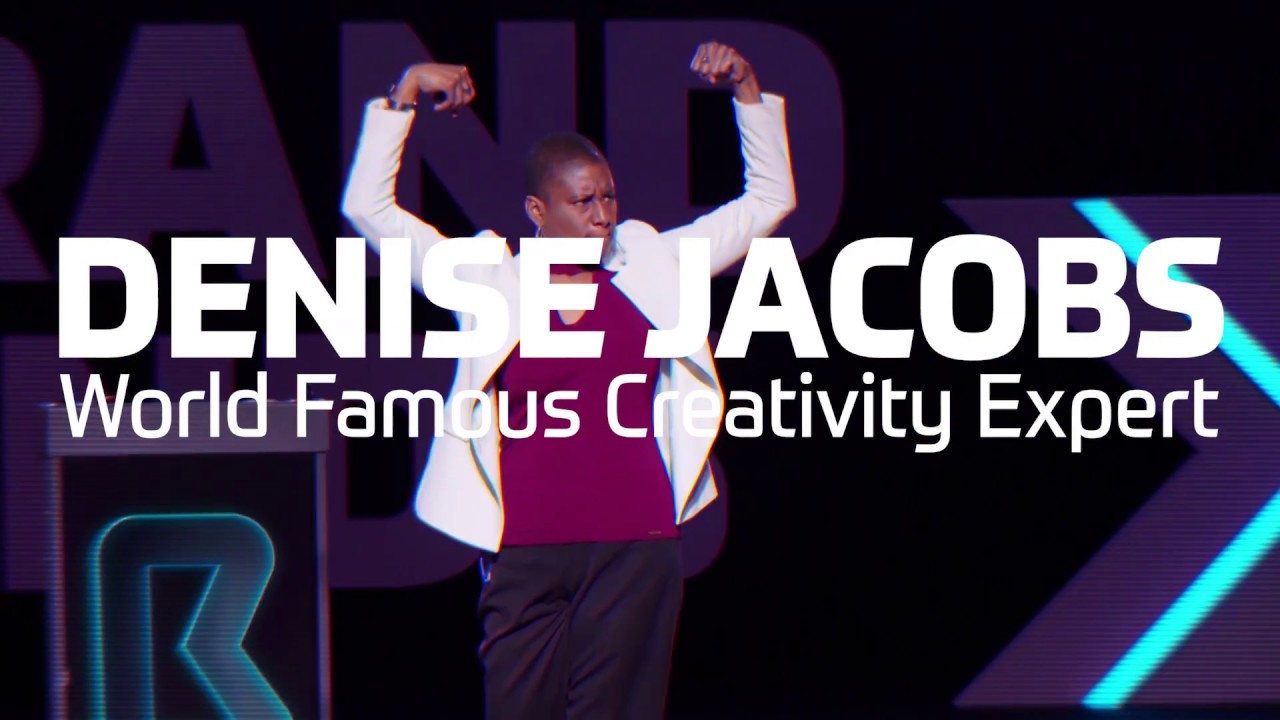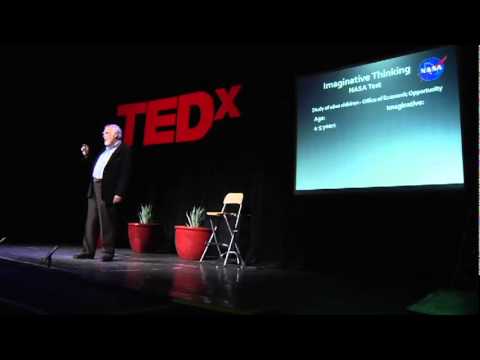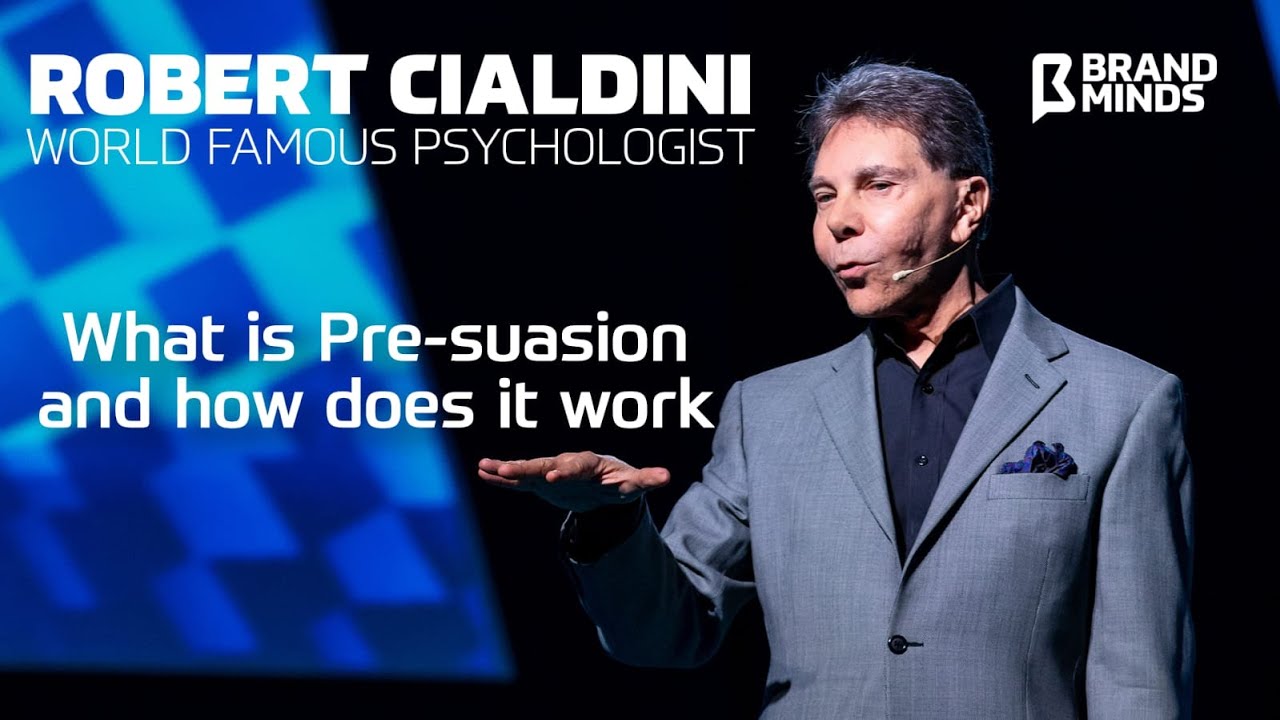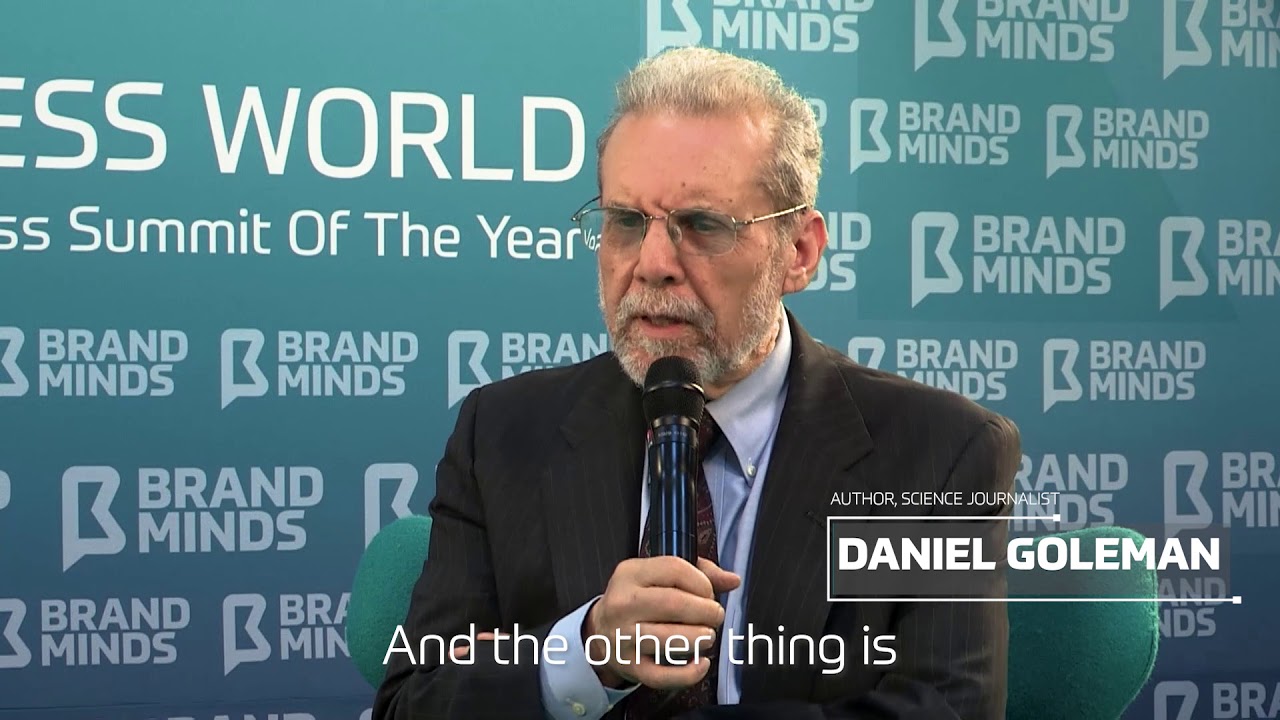What are the 4 types of innovation?
Innovation – the #1 soft skill companies are looking for
Last year, the World Economic Forum in collaboration with LinkedIn released its 2025 Future of Jobs report.
This report maps the jobs and skills in the next five years.
As you can see below, innovation ranks at #1 in the Top 10 skills employers are looking for in an employee in 2025.
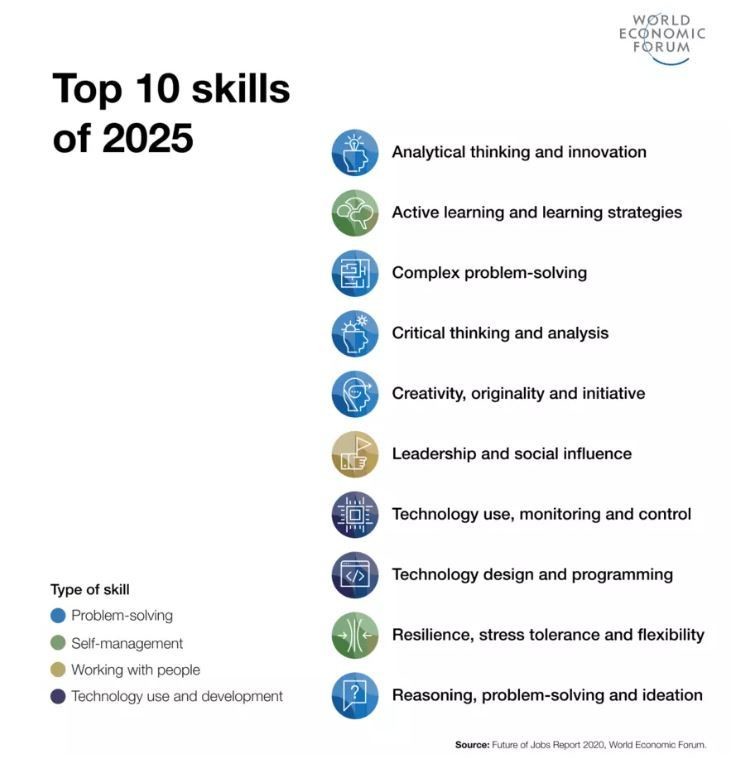
In 2020, the top most sought-after skill was creativity.
Why are employees expected to have analytical thinking and innovation skills? Why is creativity not enough?
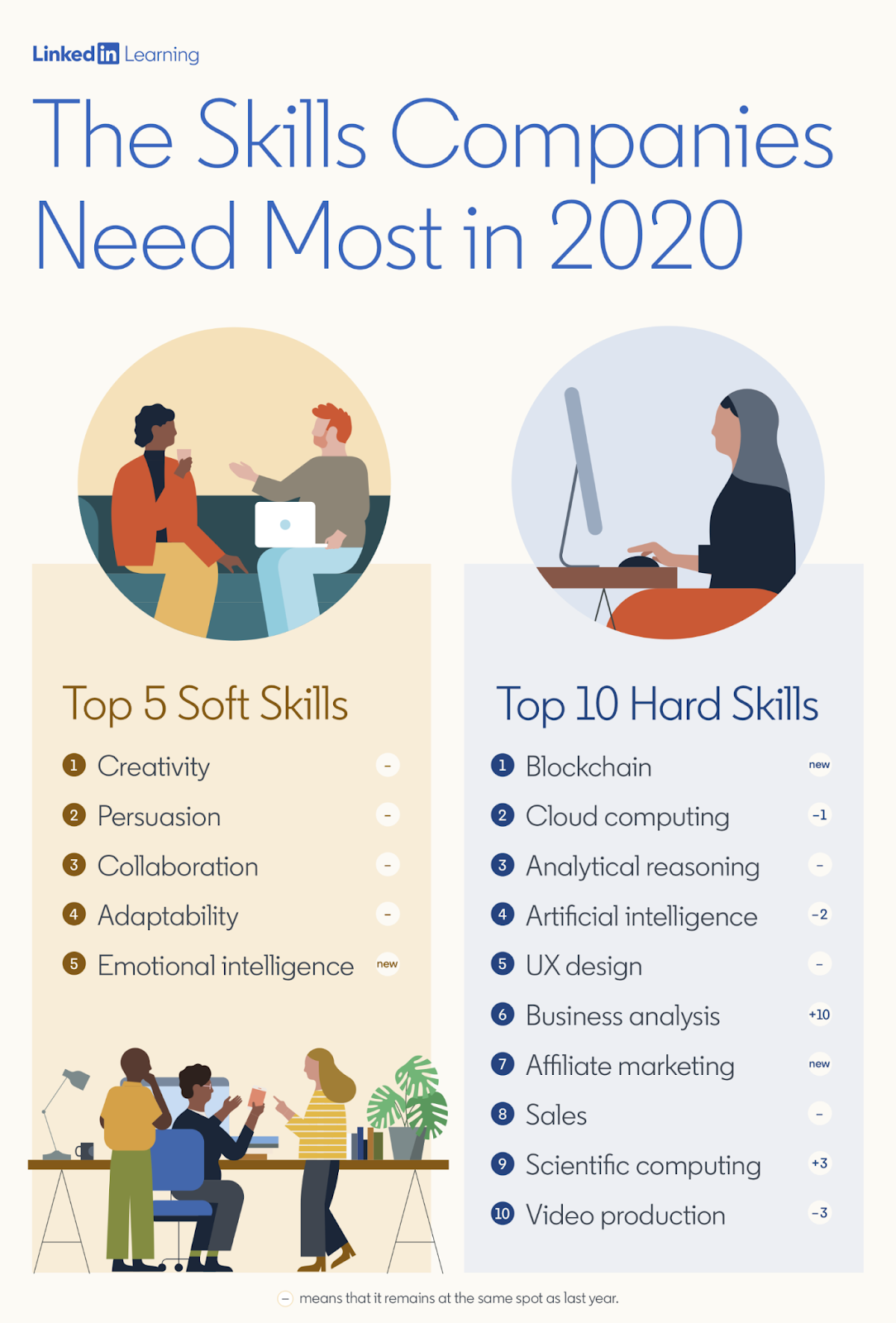
The World Economic Forum report answers this question with an in-depth list of key insights which I encourage you to read.
But if you want the short answer, here’s my conclusion.
The future of work is about automation and robots. The report found that by 2025, the time spent on current tasks at work by humans and machines will be equal.
While an AI software can do creative work (see the AI writing news or the AI doing movie trailers), software and automation robots cannot be innovative.
Innovation requires other skills besides creativity. Read on to find out what these skills are.
If innovation is not (only) creativity, then what is it? Is it a process? Is it a mindset?
First let’s establish the difference between creativity and innovation.
Creativity vs Innovation
On this subject, the best definition of innovation as opposed to creativity I could find is the following:
The key difference between creativity and innovation is that the first refers to generating a fresh and new idea, whereas the second implies initiating new service, product or invention to the market, which was not introduced before.
Creativity vs Invention vs Innovation
Let’s bring another term into the conversation, one that is commonly used to define innovation: invention.
Does invention equals innovation? And if it doesn’t, what’s the difference between invention and innovation?
To answer this question, here’s a great piece of content from Innoway, an innovation consultancy:
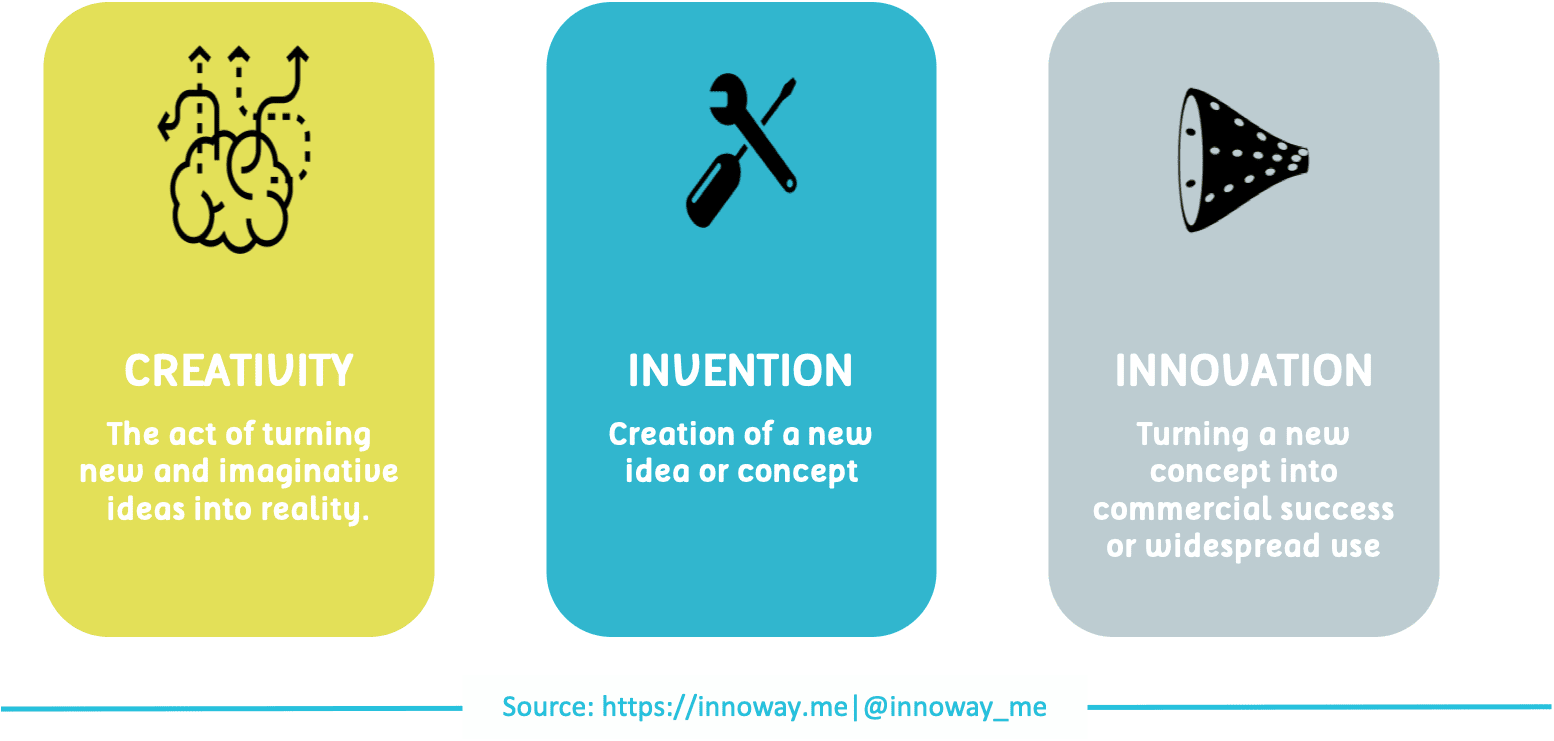
They do a great job of explaining the difference between creativity, invention and innovation.
Creativity is the art of turning new and imaginative ideas into reality.
Invention is the creation of a new idea or concept.
Innovation is turning a new concept into commercial success or widespread use.
Zaha Hadid’s amazing buildings are a testament to her creativity, but they are neither inventions, nor innovations.
Leonardo da Vinci, the famous painter was also a prolific inventor. Among his many designs was that of a helicopter which he called the Aerial Screw.

Leonardo da Vinci’s helicopter
If you look at da Vinci’s sketch dating back to the 1480s, you will notice a very strong resemblance with NASA’s Ingenuity Helicopter which took its first flight on Mars earlier this month.

Ingenuity helicopter, source: NASA
Taking inspiration from Leonardo’s concept, the engineers at NASA were prompted to solve a series of challenges related to Mars’ atmosphere. The Red Planet’s atmosphere is 99% less dense than Earth’s which makes it difficult for the helicopter to achieve enough lift.
The Aerial Screw is an invention while the Ingenuity is an innovation.
What is innovation?
Innovation sits at the intersection of customer desires, technology and business opportunities.
Innovation is defined as something new to the market that creates economic and customer value through research, creativity and invention.
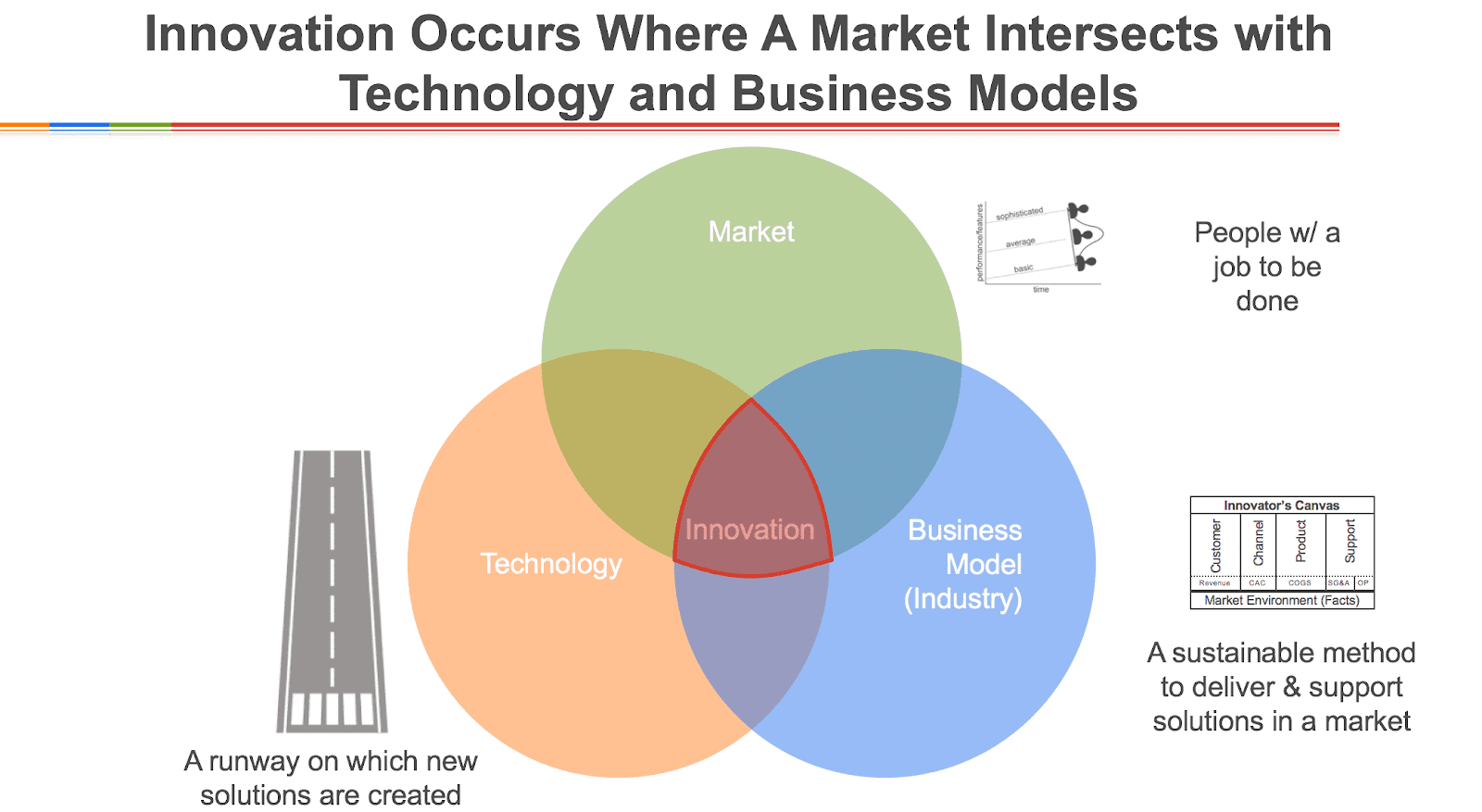
source: ignitionframework.com
Innovation occurs where a market intersects with technology and business models.
The market is composed of people with a job to be done. The business model is a sustainable method to deliver and support solutions in a market. Technology is a runway on which new solutions are created.
Innovators start with the market in mind and what the customers want or need.
Technology is not a goal, it’s a means to an end. Innovators ask themselves How can I use technology to address an unmet need in the market? What technology-driven solution can I come up with that provides customers with a solution to their problems and revenue for the company?
This is what innovators think about when they wake up in the morning and when they go to sleep at night.
The 4 types of innovation
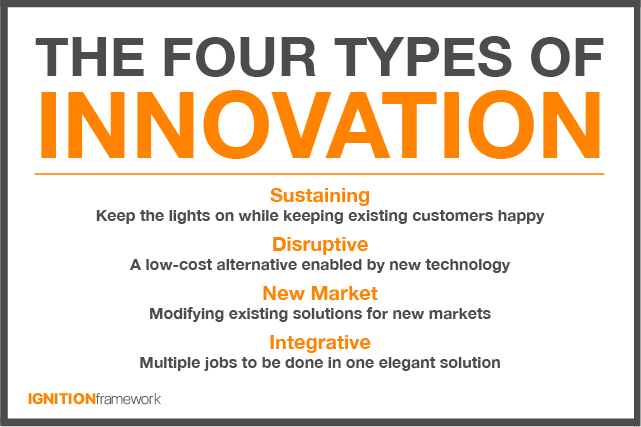
Jake Nielson, a marketing leader with 10+ years of innovation management experience came to the conclusion that there are 4 types of innovation:
- sustaining innovation;
- disruptive innovation;
- new market innovation;
- integrative innovation.
Sustaining innovation
Apple is an example of sustaining innovation. Since the first iPhone in 2007, the company has come up with new iterations of the iPhone every year. Every iteration had new features, improved functionality, beautiful design and innovations.
Disruptive innovation
Airbnb disrupted the hospitality industry. Uber disrupted the taxi industry. Netflix disrupted the DVD mail service. Amazon disrupted brick and mortar commerce. All four provide a better alternative enabled by new technology.
New market innovation
BMW has been manufacturing conventional cars since the early 1950s. Starting with the 1970s, the German car maker has been researching and testing electric cars. Today BMW electric cars are among the best in the market and the company is planning to offer plug-in hybrid versions of all its core-brand models.
Integrative innovation
MailChimp started out as an email provider for small businesses. The company’s email service was so successful that it became one of the most popular in the world. Listening to their customers’ needs, MailChimp expanded its services. MailChimp is now more than an email service provider, it’s an all-in-one marketing platform which empowers its users to build landing pages, create digital campaigns and leverage powerful insights. It supports small businesses to reach their marketing goals faster.
What type of innovation is your company developing?
Join the Conversation
We’d love to hear what you have to say.
Get in touch with us on our LinkedIn Page, Facebook Page, Twitter or TikTok.
Top 5 most in-demand soft skills you need to grow in 2021
Looking to develop your soft skills? Read on to discover the Top 5 most in-demand soft skills you need to grow in 2021.
Professional growth and career advancement hinge on the employee’s desire and ability to learn new things.
Whether you are looking to specialize in your field which means you’d want to go deep, or you are looking to diversify which implies going left and right (learn more about the T-shaped marketer), learning never stops. And it shouldn’t, rightfully so.
Over the past few years, LinkedIn, the 722-million member professional social platform, has been curating a list of the most in-demand soft and hard skills employers are looking for.
Here is LinkedIn’s list for the most in-demand soft and hard skills 2020.
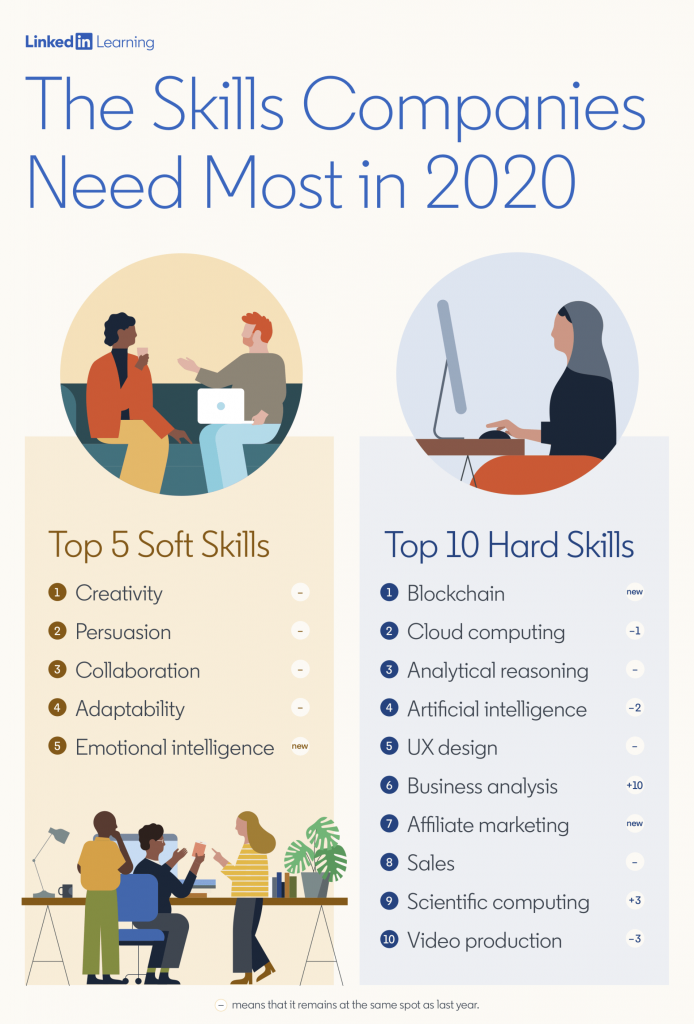
What are the Top 5 soft skills companies look for in their employees and new hires in 2020?
- Creativity
- Persuasion
- Collaboration
- Adaptability
- Emotional intelligence
Let’s talk about each of them.
1. CREATIVITY
Creativity is now the #1 soft skill companies are looking for three years in a row.
Why is creativity in such high-demand?
Listen to creativity expert and BRAND MINDS speaker Denise Jacobs:
Can creativity be taught or is it an inherent trait?
I believe one of the most creative organizations in the world today is NASA. Going into space requires finding solutions to unique problems and even unknown situations. That certainly pushes the brightest minds at NASA to come up with creative and out-of-the-box solutions.
In the 1960s, NASA reached out to Dr George Land, a creative performance researcher and enrolled his expertise in devising a creativity test to help with the selection for innovative engineers and scientists. Dr Land accepted the challenge and devised a creativity assessment that worked very well.
Inspired by the results and curious to know more about where creativity comes from, Dr Land conducted a research study to test the creativity of 1,600 children ranging in ages from 3 to 5 years old. He re-tested the same children at 10 years of age, and again at 15 years of age. And then he extended the testing pool to include 1 million adults.
What exactly did Dr Land test for?
He tested for the ability to look at a problem and come up with new, different and innovative ideas.
Here are the results:
5-year-olds: 98% imaginative
10-year-olds: 30% imaginative
15-year-olds: 12% imaginative
31-year-olds: 2% imaginative
That’s quite a shock, isn’t it?
We are the most creative in our childhood and we lose our creativity growing up.
What is the reason?
Dr Land gave the following explanation in his book, Breaking point and beyond:
What we have concluded is that non-creative behaviour is learned.
Is there something we can do about it?
In his 2016 Tedx Talk, Dr Land says there is a way to undo this process.
Let’s hear from Dr Land (08:37):
First of all, we need to think about creativity beyond artistic abilities.
Artists are not the only creative people.
Professionals in every industry have the ability to be creative. Because in the workplace, being creative means looking at a problem from a different viewpoint and coming up with a fresh solution, as Dr Land explained a few years ago.
It’s not about waiting to be inspired; it’s about thinking creatively.
According to Martin Lindstrom, brand expert and BRAND MINDS speaker, the first step towards creativity is taking time off from your smartphone, observing the people around you and essentially allowing yourself to be present.
2. PERSUASION
In business communication, persuasion is the process of presenting arguments to move, motivate, or change your audience.
Persuasion is one of the most important skills that a leader needs. He has the vision and he sets the goal; he needs to move and motivate his employees to fulfil the vision and meet the goal.
It’s the leader who tells his colleagues Come with me and let’s accomplish the mission together. This is the authoritative leader who provides employees with inspiration, motivation, empowerment and a sense of accomplishment.
Or the visionary leader whose motto is Embrace my vision. This type of leadership is called visionary leadership. The visionary leader must hone his persuasion skills to inspire and motivate people to pursue a long-term vision. Learn more about leadership styles: 12 Leadership Styles for Successful Leaders (complete list) with Pros & Cons.
Persuasion skills are necessary for sales and marketing as well. With a 30-year career researching the science of influence, Dr Robert Cialdini is the world’s most renowned persuasion expert and a BRAND MINDS speaker.
His Theory of Influence is based on seven key principles:
- Reciprocity,
- Commitment and consistency,
- Social proof,
- Authority,
- Liking,
- Scarcity,
- Unity.
Brands build on them to increase brand awareness and sales. Dr Cialdini’s latest insights on persuasion are in his 2016 book Pre-Suasion: A Revolutionary Way to Influence and Persuade.
3. COLLABORATION
We are living and working in a fast-paced environment.
Startups with a handful of employees that work as one are able to move quickly and more efficiently. Corporations with thousands of employees are slow and bureaucratic.
There are many examples of hundred-year-old brands outcompeted by new entrants on the market.
That’s where agility comes into play as a way of organizational transformation with one goal: adapt.
Want to learn more about agility? Read 22 benefits of the agile organization.
For an organization to become agile, its employees must form small teams. Every team member is expected to collaborate with each other. And that’s more difficult than you might think.
To meet the set goals, team members must learn to listen to each other, be supportive, be generous, learn to communicate clearly and openly, share knowledge and information, refrain from judgement, reject bias, debate and adapt.
The team leader must also be an example of effective communication and collaboration.
4. ADAPTABILITY
At the time of writing, the world has been fighting to end the COVID-19 pandemic for almost a year.
Our private and professional lives have been profoundly affected.
Many businesses are fighting to survive while others have already closed their doors. Adaptability has never been more important.
Why are companies looking for employees with a high ability to adapt?
Because these employees are a great asset to the company.
Highly-adaptable employees are:
- Willing to experiment;
- Undeterred by failure;
- Use the failure as an opportunity to learn;
- Resourceful;
- Keep an open mind;
- Have a growth mindset.
5. EMOTIONAL INTELLIGENCE
Emotional intelligence is a new entry in LinkedIn’s Top 5 most in-demand skills of 2020.
Why are companies looking for emotional intelligent employees?
Let’s first find out what is emotional intelligence.
Emotional intelligence is the ability to perceive, evaluate, and respond to your own emotions and the emotions of others. It’s the skill that facilitates and nurtures the other four.
Daniel Goleman, one of the world’s leading psychologists and BRAND MINDS speaker, introduced the concept of EQ or emotional intelligence in his 1995 bestseller, Emotional Intelligence.
According to Daniel Goleman, there are 5 key elements of emotional intelligence:
- Self-awareness;
- Self-regulation;
- Motivation;
- Empathy;
- Social skills.
Employees with high EQ collaborate better, are more adaptable, use persuasion for the right reasons, are motivated and able to motivate others.
The workplace benefits from increased engagement and the business are more likely to find creative ways to stay ahead of the competition.
Join the Conversation
We’d love to hear what you have to say.
Get in touch with us on our LinkedIn Page, Facebook Page, Twitter or TikTok.
LinkedIn Report: 4 Trends Transforming The Workplace in 2019
LinkedIn, the 600 million users social network has released its 2019 Global Talent Trends Report. The report highlights four trends transforming the workplace in 2019.
The researchers have surveyed over 5000 talent professionals in 35 countries interviewing company leaders, speaking with experts, and observing activity on the LinkedIn platform.
Here are 4 trends which are set to transform and shape the workplace in 2019:
- Soft skills;
- Work flexibility;
- Anti-harassment;
- Pay transparency.
1. Soft Skills
A.I. may be able to write news articles and making movie trailers, but they cannot display soft skills.
Creativity, persuasion, collaboration, adaptability and time management are valuable soft skills employers actively look for when searching for new hires.
80% of surveyed employers say soft skills are increasingly important to company success. The challenge that companies are struggling to overcome is the process by which to identify the aforementioned soft-skills. According to this report, 57% of employers struggle to assess soft skills accurately.
LinkedIn: 6 tips to help your company assess your candidates’ soft skills
1.Determine the soft skills valued most at your company by taking the following steps:
- interview your company’s leaders;
- identify the skills shared by your top performers;
- consider the skills your company needs to take on future challenges.
2. Identify and define the skills needed for a given job.
3. Consider online tools to prescreen candidates – these tools assess their soft skills systematically and with less bias (ideally).
4. Be mindful that bias can creep in.
5. Standardize your interview questions.
6. Ask problem-solving questions to see soft skills in action.
A case study on hiring for soft skills and hard skills
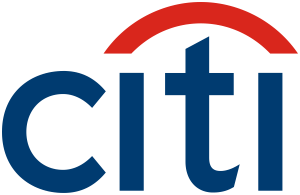
Citi, the Wall Street firm is not hiring for technical skills alone.
The company uses problem-solving case studies and group exercises to showcase candidates’ collaboration, communication, and leadership skills.

2. Work Flexibility
Between 2013 and 2017 candidates’ request for flexible workplaces has increased from 25% to 31%.
Since 2016 the number of job posts on LinkedIn which mention flexibility rose to over 78%.
The ability to work from any place outside the office has been driven by technology and required by an increasing number of employees who are looking to improve their work-balance life and be more involved with their family.
Here are the top benefits of work flexibility as mentioned by talent professionals:
- Improves employee work-life balance – 77%;
- Encourages retention – 54%;
- Attracts candidates – 51%;
- Increases productivity – 42%;
- Expands available talent pool – 38%.
Women candidates are more inclined to look for flexibility when considering a job offer.
The LinkedIn report found that 36% of women and 29% of men say flexible work arrangements are very important when considering a job.
PwC has identified five megatrends which will influence the world and shape the business environment of 2019.
One of these trends is the demographic and social change that is driven by the ageing population which is the fastest growing segment today. The ageing population brings disruption to the traditional life cycle of education, work and employment and increased costs on healthcare.
The solution to this situation lies in the business environment.
To succeed and thrive, businesses need to harness the power of older workers and women. Businesses catering to women’s needs will see increased productivity and reduced turnover.
Discover 4 flexible work strategies in our article:
Employees Stress – Causes, Business Costs and What To Do To Prevent It
A flexible workplace is also known to bring difficulties in collaboration and bonding. Have no fear, technology comes to the rescue! There are many tech solutions to overcome remote work challenges like instant messaging platforms, collaboration tools, audio and video conferencing etc.
LinkedIn: 6 steps to building a flexible work culture
- Know what types of flexibility your employees want;
- Optimize your office space for a semi-remote workforce;
- Help employees connect through technology;
- Promote your flexibility policy in job descriptions, candidate interviews, and employee meetings;
- Train leaders to manage flexible workers;
- Tailor your flexibility policies to fit local cultural contexts, needs, and goals.
A case study in work flexibility
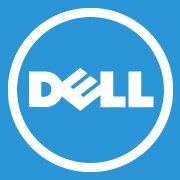
Nearly 60% of Dell employees work flexibly. Dell’s flexible program has saved the tech giant an average of $12 million annually since 2014 due to reduced office space requirements.

3. Anti-Harassment
The #metoo movement spread like wildfire across the globe in 2017. The first spark was ignited by the high-profile harassment cases in the US entertainment industry. Over a short period of time, harassment cases voiced by women encompassed the business environment across multiple industries.
One may believe that companies didn’t have anti-harassment policies before the #metoo movement. They had only they didn’t prevent unacceptable behaviours from happening; the company culture was such that harassment and assault cases went unreported to management. Harassment victims didn’t believe they would be heard or that management would take any actions towards their assailants.
LinkedIn found that workplace harassment content shared on its platform increased by 71% year on year.
Employers are seeing anti-harassment as a business necessity, not just a legal and moral one. Hostile workplaces hurt the bottom line through lost productivity and turnover, while respectful ones attract talent and improve engagement.LinkedIn, The 2019 Global Talent Trends Report
75% of the talent professionals surveyed by LinkedIn said they had noticed the following behavioural changes among employees over the last two years:
- Speaking up more when uncomfortable;
- Discussing social issues more openly;
- Calling out bad behaviour more;
- Telling fewer insensitive jokes;
- Willing to listen more.
Here are the most effective anti-harassment tactics as mentioned by the surveyed professionals:
- Promote ways to safely report;
- Establish a zero-tolerance policy;
- Add more ways to safely report;
- Hold training sessions;
- Increase gender diversity of leadership;
- Add or improve policies.
LinkedIn: 4 steps to help combat harassment
- First, understand where you are before you can see what needs to change: review your existing policy, understand what your employees want, rethink well-intentioned practices that can backfire, get buy-in from the top.
- Give your policy a refresh: tell people exactly how you handle harassment claims, give employees multiple ways to report, define good behaviour, too, adapt your policy to local needs;
- Train and communicate: focus on the grey areas, make it interactive and personal, be inclusive of all victims, complement customized training with external resources, empower employees to step in when they witness an offence, not just when they’re a target.
- Respond and follow up: help victims feel safe from the start, tailor the response to the severity of the offence, respond to inappropriate behaviour publicly and with real consequences, reach out to victims even after your legal obligation is fulfilled.
A case study on anti-harassment
Last year 20.000 Google employees left their offices in New York City, Dublin, Berlin, Singapore and other cities around the world to protest against the company’s handling of sexual misconduct and inequality. Google walkouts forced the big company to review its harassment and transparency policies.
In an email sent to employees, Google CEO Sundar Pichai acknowledged previous shortcomings and laid out a plan to make changes:
We recognize that we have not always gotten everything right in the past and we are sincerely sorry for that. It’s clear we need to make some changes.
Going forward, we will provide more transparency on how we handle concerns. We’ll give better support and care to the people who raise them. And we will double down on our commitment to be a representative, equitable, and respectful workplace.Sundar Pichai
4. Pay Transparency
For years, employers refrained from disclosing too much information about employee salaries. They feared a transparent process would cause wage disputes, limit their ability to negotiate, and encourage competitors to poach talent. Salaries were kept a secret under the thick blanket of confidentiality.
The problem is when people don’t have enough information, they tend to fill in the blanks with negative assumptions.
A 2017 report conducted by PayScale showed that 61% of surveyed employees believed they were underpaid compared to other colleagues.
If employers are looking to attract the best and the brightest, they should include pay transparency in their hiring strategies.
Searching for conversations focused on pay transparency, LinkedIn found that the content shared by its users on this particular topic has increased by 136% since 2014.
But not all employers are ready to shift gears so quickly. As reported by talent professionals, 27% of companies share salary ranges, 22% don’t share but are likely to start and 51% don’t share and are unlikely to start.
Benefits of sharing salary ranges as highlighted by LinkedIn in its report:
- Streamlines negotiation;
- Ensures fair pay;
- Filters out those who’d decline;
- Allows interview to focus on other things.
LinkedIn: 7 steps to establish pay transparency
- Conduct an internal audit to see how your pay compares to competitors and whether you have any major pay gaps across gender, race, and those in similar roles;
- Decide how transparent you want to be;
- Solicit employee input;
- Develop clear compensation criteria;
- Train managers to discuss pay appropriately;
- Take it one step at a time;
- Communicate clearly as you roll out the policy.
A case study on pay transparency

Buffer began sharing salaries publicly online in 2013. The company uses a salary formula which meets the transparency criteria for each of its employees. The formula determines every employee’s pay based on their experience, local cost-of-living, and the market rate of the role. Buffer employees are happy with the company’s pay transparency strategy because it ensures they receive equal pay for equal work. They also feel valued and respected when they know they are being paid fairly.
Join the Conversation
We’d love to hear what you have to say.
Get in touch with us on Facebook Group and Twitter.

